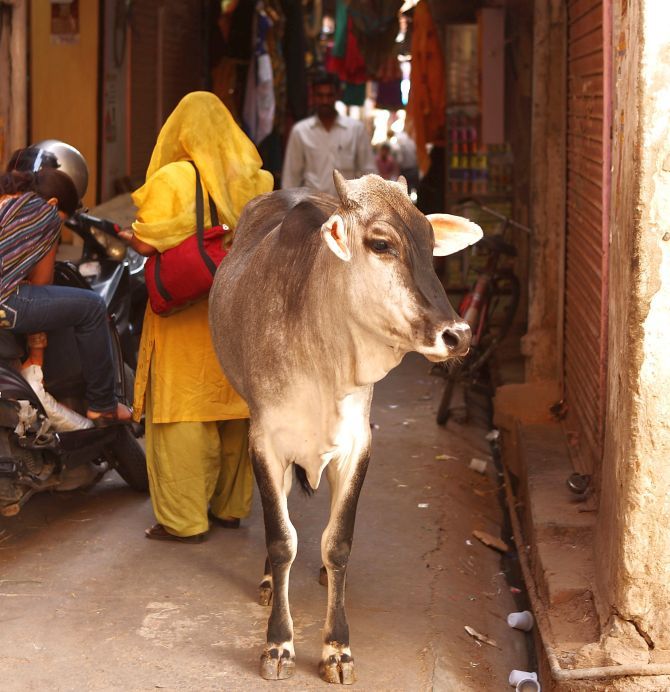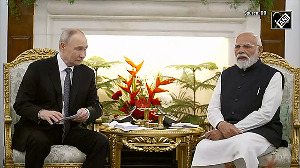Here are 10 things you should know about the new rules on buying and selling of cattle which have generated a storm of protest across the country.

The Madras high court on Tuesday stayed the new rules banning the sale and purchase of cattle for slaughter, but not before the issue generated a storm across the nation over concerns that it was a backdoor attempt to regulate food habits.
But what exactly do the new rules say? Here's a checklist.
1. The new rules, Prevention of Cruelty to Animals (Regulation of Livestock Markets) Rules, 2017, have been framed under the Prevention of Cruelty to Animals Act, 1960.
While the parent act talks of the ‘formation or establishment of pinjrapoles (enclosure), rescue homes, animal shelters, sanctuaries and the like where animals and birds may find a shelter when they have become old and useless or when they need protection’, the new rules talk about the animal’s custody ‘at an infirmary, pinjrapole, Society for the Prevention of Cruelty to Animals, Animal Welfare Organisation or Gaushala during pendency of litigation’. The gaushalas, thus, are a new addition in the mechanism for ensuring animal welfare.
2. While a press release from the Press Information Bureau says ‘the prime focus of the regulation is to protect the animals from cruelty and not to regulate the existing trade in cattle for slaughter houses’, the new rules, by including the ‘lairage adjoining a market or a slaughterhouse’ under its definition of animal market, a place where animals cannot be bought and sold for slaughter purposes, does exactly what PIB says it does not: regulate the existing trade in cattle for slaughter houses.
So where does one now buy animals for slaughter? The PIB release says: Animal for slaughter will have to be bought from the farmers at the farms.
Also read: 'This government is in denial that India is a beef-eating country'
3. While many states in India have banned cow slaughter, some states have also included the ‘progeny of cow’ to cover bullocks. The new rules cover a wider area and bring within the anti-slaughter ambit ‘bulls, bullocks, cows, buffalos, steers, heifers and calves and includes camels’. This is probably for the first time that slaughter of buffalos and camels are being banned.
4. Do the new rules fly in the face of the objectives of the original Act? Consider this: The rules that a person selling cattle in the market has to declare that the animal was not being sold for slaughter; likewise the purchaser has to declare that the animal will not be slaughtered. The parent law, Prevention of Cruelty to Animals Act, 1960, does not mandate this. In fact, it allows for slaughter of animals under its Section 11 which excludes ‘any act in the course of the destruction or the preparation for destruction of any animal as food for mankind unless such destruction or preparation was accompanied by the infliction of unnecessary pain or suffering’.
5. Aside from these, the new rules are unexceptionable in that they seek to prevent cruelty of animals during trade by mandating the constitution of an animal market committee for the management of animal markets in a district. The panel will consist of, among others, a veterinary officer. The rules require that animal markets, which are vaguely defined in Section 2(b) of the notification, must have all facilities for the animals, like adequate water supply, shaded enclosures, lighting, bedding, etc.
The veterinary officer will examine each cattle to ensure that no sick animals are being sold at the animal market. In case of an ‘unfit’ animal being found, the veterinary officer will arrange for its treatment and the owner of the animal will have to bear the cost incurred on such treatment. Unfit animals will have to be kept in separate enclosures and cannot be displaced unless with the permission of the veterinary officer.
6. All the processes, from offloading of animals in the market to their loading after being sold, will supervised by the veterinary inspector who will have to ensure that no rule -- regarding the handling of animals in the market or during transport -- shall be violated.
7. Carcasses of animals that die in the market or euthanised in case of irreparable severe injury will have to be incinerated and cannot be sold or flayed for leather.
8. The rules prohibit ‘cruel practices’ like hot branding, cold branding, shearing and painting of horns, bishoping in horses and ear cutting in buffaloes, casting animals on hard ground without adequate bedding, use of any chemicals or colours on body parts of animals, sealing teats of the udder using any material such as adhesive tapes to prevent the calf from suckling.
Forcing animals to perform any unnatural acts such as dancing, even putting any ornaments or decorative materials on animals, use of any type of muzzle to prevent animals from suckling or eating food, injecting Oxytocin into milch animals and castration of animals by quacks or traditional healers, have all been brought under the ambit of ‘cruel practices’.
Will ‘putting ornaments or decorative materials on animals’ cover the elaborate decorations on elephants during temple ceremonies, etc? Your guess is as good as ours.
9. The custody of cattle seized from a person found violating the rules will be given to infirmaries, gaushalas or Animal Welfare Board etc. The owner and the accused will have to bear the cost incurred on treatment, maintenance and transport of such animals. A person found guilty shall forfeit the ownership of the animal, which will then be put up for adoption.
10. Even a person adopting such cattle shall not sell it, slaughter it or sacrifice it for any religious purposes, the new rules mandate.
Photograph: Robert Cianflone/Getty Images










